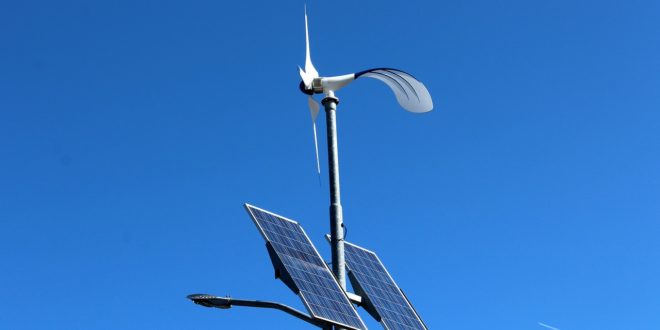Eco-consumerism is dominating the market and influencing green production practices. Individuals hope to shrink their carbon footprints while meeting their modern consumption demands. Manufacturers are targeting material pollution by incorporating renewables into their designs.
Engineers advanced solar technology over the past decade, which helps individuals produce more emission-free energy to support their product usage. Many residents are installing photovoltaic (PV) panels on their roofs to replace fossil-fuel-derived power sources. Production professionals are also placing solar technology in small electronics to power them without creating emissions.
Why is Solar Technology Leading the Green Revolution?
There are various forms of renewable energy, and individuals are the most familiar with solar power. Solar is leading the green revolution because of its various environmental and financial benefits. The first advantage of using the clean power source is creating electricity independently.
Other renewable energy technologies require large-scale systems which produce regional grids instead of personal supplies. Solar power is also gaining popularity in the media for its emission reduction properties.
Conventional energy sources rely on fossil fuels, like oil and gas, to create electricity. Fossil fuels create atmospheric and surface-level pollution through greenhouse gas emissions and oil spills. Another benefit of solar energy is its cost-effectiveness.
Solar is currently the least expensive power source on the market. It also improves the health and well-being of consumers by decreasing regional air pollution. Environmental engineers and scientists evaluated the benefits of solar technology and developed five compatible small electronics.
Mini Solar Panels
A popular small electronic relying on solar technology is a mini panel. Individuals are purchasing mini panels to access clean, portable electricity in remote areas. Avid campers and disaster relief professionals utilize the technology to improve the sustainability of independent power sourcing.
The panels use PV technology to convert solar radiation into electricity. Solar cells collect sunlight and use the power stream to knock electrons loose. The loose electrons create a flow of energy, which transfer wires collect and convert into emission-free electricity.
Solar-Powered Cameras
Engineers are also improving the sustainability of cameras by adding solar panel connections. They developed various solar-powered cameras to support different industry endeavors. Manufacturers are adding panels to trail cameras to ensure the safety of hunting and hiking.
Professionals also create solar-powered security cameras to improve residential safety. The renewable technology supports independent monitoring systems like Ring cameras. Individuals can also use solar electronics to enhance their safety measures remotely.
Portable Solar Chargers
Many consumers are purchasing portable solar chargers to minimize their reliance on fossil fuels and support their communication devices like smartphones and tablets. The technology works by using small PV systems to charge an internal lithium-ion battery. The rechargeable battery helps individuals power their gadgets without producing greenhouse gas emissions.
Wireless Solar Keyboards
Individuals can also improve the sustainability of their office spaces by adopting solar-powered keyboards. Large tech manufacturers like Logitech are adding solar technology to their products. The keyboard contains a built-in panel across the top which produces electricity.
The solar panel can also produce electricity from artificial lighting, which makes the keyboard ideal for office spaces with limited natural light. It additionally retains a three-month charge after only two hours of light exposure. Replacing small electronics with solar alternatives in offices can shrink a company’s footprint over time.
Solar Landscape Lights
Another solar-powered small electronic device is a landscape light. Many homeowners place garden lamps around their landscape features or pathways. Individuals may shrink their carbon footprints and create independent lighting systems by installing solar landscape lights.
The devices penetrate the ground with stakes and generate electricity with small PV panels on top of the feature. Solar-powered landscape lights look identical to conventional garden lamps so consumers can improve residential sustainability without sacrificing design.
Adopting Solar-Powered Electronics
Consumers can replace their conventional electronics with solar-powered versions by accessing government funding to support the transition. They may also adopt the most beneficial technologies by first calculating their carbon footprints and identifying the biggest contributing factors. Individuals can additionally enhance the sustainability of their purchases by selling their non-solar items at second-hand stores to reduce e-waste.
Many countries also establish manufacturer responsibility laws, which hold production professionals responsible for their waste. Consumers can send their non-sustainable products back to the manufacturer before they replace them with solar-powered alternatives. After individuals adopt sustainable small electronics, they may access the benefits of using renewable energy.
 Alternative Energy HQ solar power for homes, wind energy, and bio fuel issues
Alternative Energy HQ solar power for homes, wind energy, and bio fuel issues



